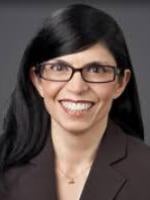On July 9, 2018, President Trump announced his nominee to be the next justice of the Supreme Court of the United States, replacing Justice Anthony M. Kennedy, who, on the last day of the October 2017 term, announced that he would retire from the Court. Long known as a Washington insider, Brett Kavanaugh, 53, currently serves as a judge on the U.S. Court of Appeals for the District of Columbia Circuit.
During his announcement, President Trump thanked “Justice Kennedy for a lifetime of distinguished service.” During a brief introduction of Kavanaugh, the president stated, “What matters is not a judge’s political views but whether they can set aside those views to do what the law and the Constitution require. I am pleased to say that I have found without doubt such a person.”
It comes as no surprise that Kavanaugh—who has a vast record of conservative opinions that he has issued while on the bench—characterized his own judicial philosophy as follows: “A judge must interpret statutes as written, and a judge must interpret the Constitution as written, informed by history and tradition and precedent.”
Kavanaugh, who was born in Washington, D.C., has years of experience in both the judiciary (first as a clerk and later as a judge) and the executive branch (in the office of the independent counsel and later in the White House). His prominent career led Senator Chuck Schumer (D-NY) to comment about Kavanaugh, “From the notorious Starr report, to the Florida recount, to the President’s secrecy and privilege claims, to post-9/11 legislative battles including the Victims Compensation Fund, to ideological judicial nomination fights, if there has been a partisan political fight that needed a very bright legal foot soldier in the last decade, Brett Kavanaugh was probably there.” Here are six fast facts about this well-connected nominee to the Supreme Court.
1. He once clerked for Justice Kennedy.
After graduating from Yale University and Yale Law School, Kavanaugh was a law clerk for Judge Walter King Stapleton of the U.S. Court of Appeals for the Third Circuit and Judge Alex Kozinski of the U.S. Court of Appeals for the Ninth Circuit. Kavanaugh then had a one-year fellowship in the office of Solicitor General of the United States Kenneth Starr and later clerked for Supreme Court Justice Kennedy—whose seat he may fill.
2. His time as a Supreme Court law clerk overlapped with Justice Gorsuch’s.
At the same time that Kavanaugh was clerking for Justice Kennedy, Justice Neil M. Gorsuch was working for Justice Byron White and for Justice Kennedy as well (on a part-time basis). Both Kavanaugh and Gorsuch had previously attended Georgetown Preparatory School in Maryland.
3. He played a significant part in the Clinton-era Starr Report.
After clerking for Justice Kennedy, Kavanaugh worked for Starr a second time as associate counsel in the office of the independent counsel. During this time, he was a principal author of the 1998 Starr Report to Congress on the investigations of Monica Lewinsky’s and President Bill Clinton’s relationship and on the death of Vincent Foster, who was deputy White House counsel under Clinton. The report urged Clinton’s impeachment.
Kavanaugh later worked as a partner in private practice, specializing in appellate law.
4. He met his spouse in the White House.
In 2001, Kavanaugh served as associate counsel and senior associate counsel to President George W. Bush. He later served as assistant to the president and White House staff secretary.
Kavanaugh’s wife, Ashley Estes Kavanaugh, who had previously served as Bush’s secretary when he was governor of Texas, also served as Bush’s personal secretary when he was president. Ashley Estes and Brett Kavanaugh met while they were both serving on Bush’s staff. Ashley Estes Kavanaugh is currently the town manager of a village in Maryland.
5. His nomination to the D.C. Circuit stalled for three years.
In 2003, President George W. Bush nominated Kavanaugh to the U.S. Court of Appeals for the District of Columbia Circuit. The nomination stalled in the U.S. Senate for three years. After a second set of confirmation hearings, the Senate confirmed his nomination in 2006.
6. Justice Kagan hired him to teach at Harvard Law School.
Since 2008, Kavanaugh has been teaching courses at Harvard Law School on the Constitution’s separation of powers doctrine and the Supreme Court itself. In 2009, he was named the law school’s Samuel Williston Lecturer on Law. Justice Elena Kagan, who before being seated at the Court served as the dean of Harvard Law School, hired Kavanaugh to teach at the school.
What’s Next?
If confirmed, Kavanaugh—who almost certainly falls to the right of Kennedy in terms of his constitutional ideologies—is expected to tip the court to the right, giving it a 5–4 conservative majority. While he has come under attack from some conservatives as not being conservative enough (on the Affordable Care Act and abortion, for example), he is likely to issue pro-employer and pro-business votes in employment and labor controversies.




 />i
/>i
